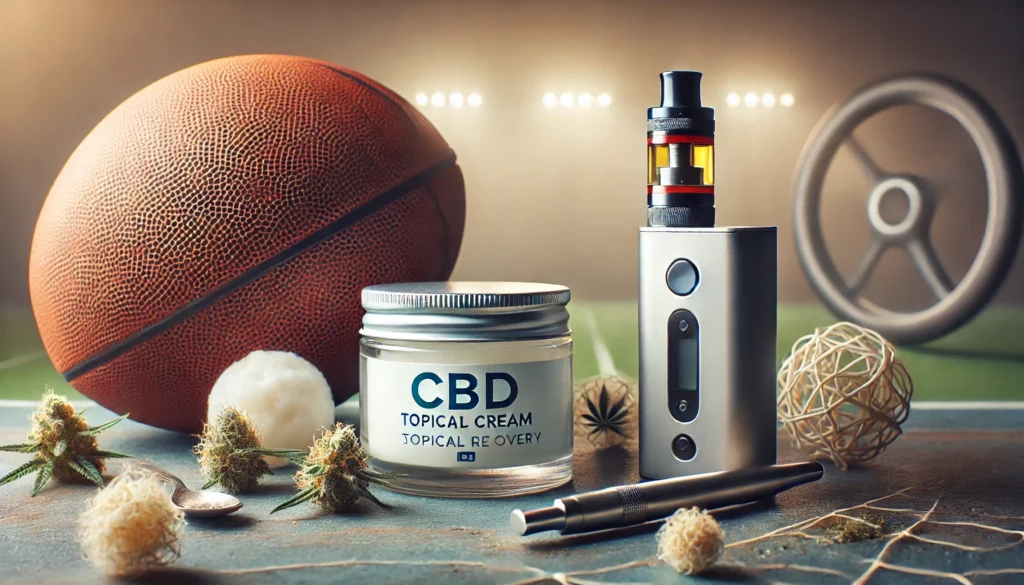Cannabis And Pain
Sports Injury Recovery and Marijuana: Can Cannabinoids Help?
In the realm of sports injury recovery, athletes and medical professionals are increasingly exploring alternative treatments to enhance healing and pain relief. One of the most promising areas of research involves cannabinoids—compounds found in marijuana—that are believed to offer potential benefits in reducing pain and inflammation. This article delves into the potential of cannabinoids in sports injury recovery, discusses methods of administration, and highlights the associated side effects.
Top Selling Item
GreenIVe Hemp Body Butter 17,500mg Per Oz Raw Natural Creamy Hemp Oil and Cocoa Butter Virgin Organically Grown. (8oz Jar)
Most Recommended
Hemp Cream Maximum Strength – Menthol Rub with Hemp Oil, Arnica, Lavender, Aloe Vera, Kava Kava, & Camphor – Natural Hemp Muscle Rub Cream for Skin, Muscles & Joints – ZenRenu, 4 oz
Understanding Cannabinoids and Their Role in Recovery
Cannabinoids, including cannabidiol (CBD) and tetrahydrocannabinol (THC), interact with the endocannabinoid system (ECS) in the human body. The ECS plays a crucial role in regulating pain, immune responses, and inflammation. CBD, known for its non-psychoactive properties, is particularly noted for its anti-inflammatory effects, making it a valuable tool for athletes recovering from injuries.

Methods of Administration
1. Topical Creams:
One of the most common methods of utilizing cannabinoids for injury recovery is through topical creams. These creams can be applied directly to the affected area, allowing cannabinoids to be absorbed through the skin. This localized application is beneficial for targeting specific areas of pain and inflammation, such as sprained ankles or sore muscles. For example, a professional basketball player might use a CBD-infused cream on their knee to alleviate pain from a minor ligament strain.
2. Vaping:
Another method of cannabinoid administration is vaping, where the compounds are inhaled into the lungs for rapid absorption into the bloodstream. Vaping allows for quick relief, making it a preferred method for those needing immediate pain reduction. However, it’s important to note that vaping can introduce harmful substances into the lungs and may not be suitable for everyone, especially those with pre-existing respiratory conditions.
Side Effects to Consider
While cannabinoids offer potential benefits, they also come with side effects that must be carefully considered:
– Impaired Coordination:
THC, the psychoactive component of marijuana, can impair motor skills and coordination. This effect can be particularly concerning for athletes who require precision and balance during their recovery period.
– Altered Judgment:
The use of cannabinoids, especially those containing THC, can affect decision-making abilities, leading to potentially risky behavior. For example, an athlete under the influence of THC might overestimate their recovery progress and attempt to return to play too soon, risking further injury.
– Respiratory Issues:
As mentioned, vaping can cause respiratory problems, which is a significant drawback for athletes who rely on optimal lung function.
Conclusion
Cannabinoids show promise in aiding recovery from sports injuries by reducing pain and inflammation. Topical creams and vaping are two popular methods of administration, each with its own advantages and drawbacks. However, it’s crucial to be aware of potential side effects, such as impaired coordination, altered judgment, and respiratory issues. Athletes considering cannabinoid use for recovery should consult with healthcare professionals to weigh the benefits against the risks.